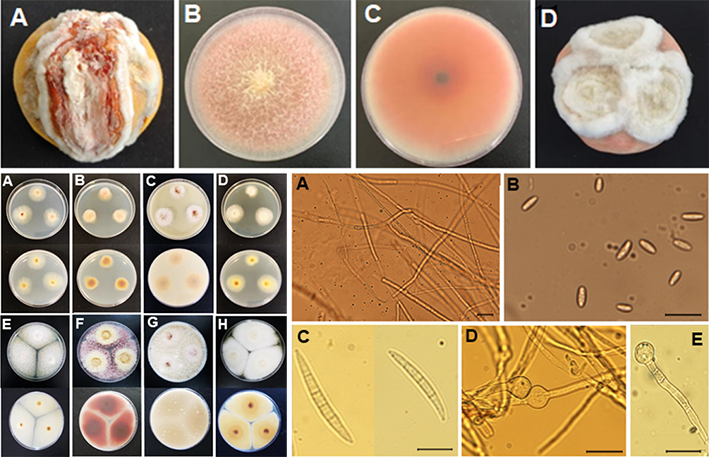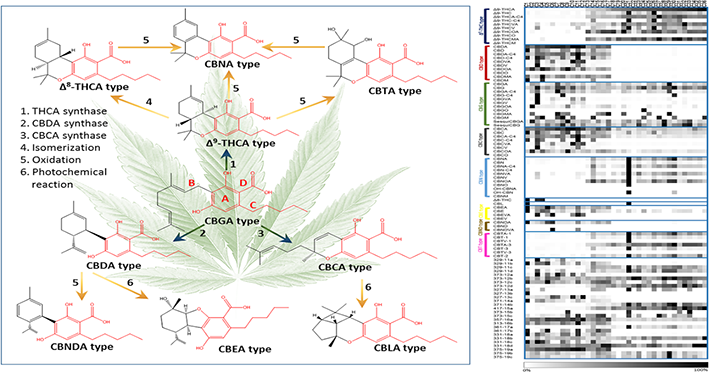Molecular Plant-Microbe Interactions Lab (Room#520)
PI: Prof. Dr. Hyong Woo Choi
Website: https://sites.google.com/view/anumpmi/home
Website: https://sites.google.com/view/anumpmi/home
Molecular Plant-Microbe Interactions (MPMI) Lab are interested in interactions between (crop) plants and microbial pathogens. Plants equipped highly sophisticated surveillance systems which consist of cell surface pattern recognition receptors (PRRs) and cytoplsmic resistant proteins (R proteins). Activation of PRR and/or R proteins via cognate pathogen-associated molecular patterns (PAMPs) and/or effector proteins, respectively, trigger various mechanical and biochemical defense responses, including cell wall strengthening, defense-related hormone biosynthesis, reactive oxygen species (ROS) generation, programmed cell death (PCD), pathogensis-related (PR) gene expression and etc. Especially, R protein-mediated defense response, termed effector-triggered immunity (ETI) accompanies systemic acquired resistance (SAR), which confers broad spectrum and long lasting disease resistance. In addition to PAMP-triggered immunity (PTI) and ETI, plants immunity can be heightened via various biotic and abiotic elicitors, including plant hormones, useful microorganisms and etc. We have been studied in understanding the mechanisms of plant innate immunity and microbial pathogenesis.
[Current Members]
- Yeasmin Fatema (Graduate student, PhD Course)
- A Yeong Heo (Graduate student, Master Course)
- Young Mo Koo (Graduate student, Master Course)
- Mee Jung Cho (Undergraduate)
- Kyung Taek Park (Undergraduate)
[Research Topics]
1) Understand host plant disease resistant/susceptibility mechanism
Plants are sessile organisms that are permanently restricted to their site of germination. To compensate for their lack of mobility, plants evolved sophisticated surveillance and defense mechanisms enabling them to rapidly react to pathogen invasion. Plant surveillance system is consist of different cell surface receptors (=pattern recognition receptor), resistant proteins (R-proteins), and downstream signaling components. Identification of new host-pathogen systems and following molecular and biochemical studies will be performed to understand host plant disease resistant and/or susceptibility mechanisms.

2) Development of disease control methods
Use of plant hormone, especially SA, and their derivatives seems very promising measure to control various diseases. Interestingly, SA upregulates basal defense in plants, whereas suppresses immune response of animals. Usefulness of combinational use of SA with other disease control methods will be explored to develop novel disease control methods in specific host-microbe interactions.

3) Identification of plant pathogenic fungi
They are important group of plant pathogens with insect, bacteria, virus and etc. Plant fungal diseases lead to annual economic losses that exceed 200 billion US dollars (Horbach et al., 2011) in pre- and post-harvest processes. In our lab, we isolate and identify the fungal pathogens from the various crop plants. For identification, microscopic observation, molecular diagnosis and pathological analyses can be performed.

4) Genome-wide screening of SA binding proteins.
SA plays a key role in immune systems of both plants and humans. In most land plants, SA is a major plant defense-related hormone regulating various biotic and abiotic stress responses. From the human side, SA is the major metabolite and active ingredient of aspirin; both compounds reduce pain, fever, and inflammation. The demonstration that salicylate-based drugs exert beneficial effects on a number of chronic and devastating diseases, such as type II diabetes, Alzheimer’s disease and certain types of cancers, suggests that future studies will identify an even more expansive role for salicylates as therapeutic agents. Understanding molecular target of SA in plant and human genomes will provide the insights into how SA might affect plant physiology and various human diseases.

5) HEMP research
As a special issue, our lab is also interested with use of HEMP plants (Cannabis sativa) as a medicinal source. HEMP contains high amount of SA derivatives (=salicylates), THCA and CBDA. Thus, further researches on HEMP will reveal interesting roles of salicylates in plants and humans.









